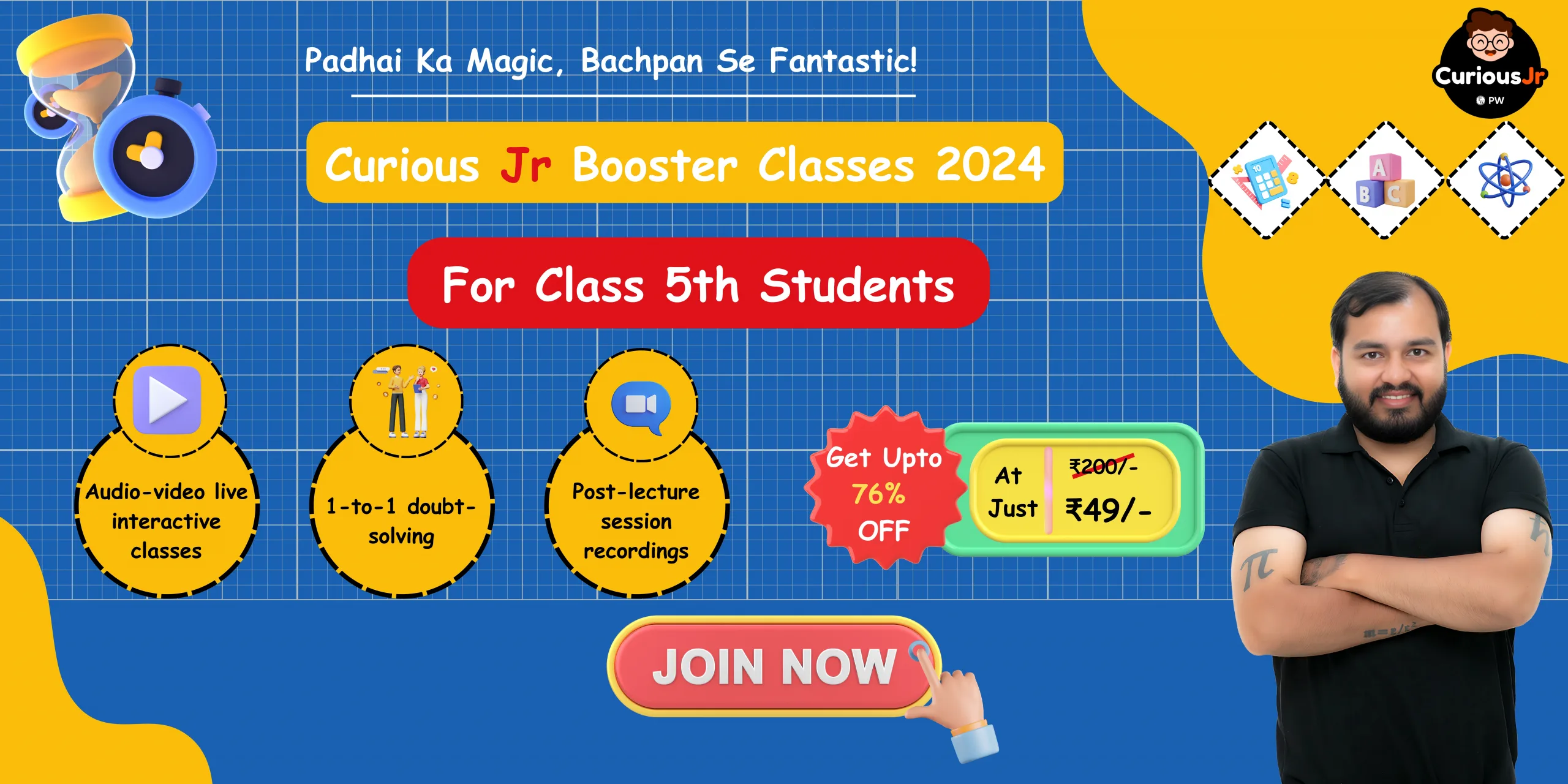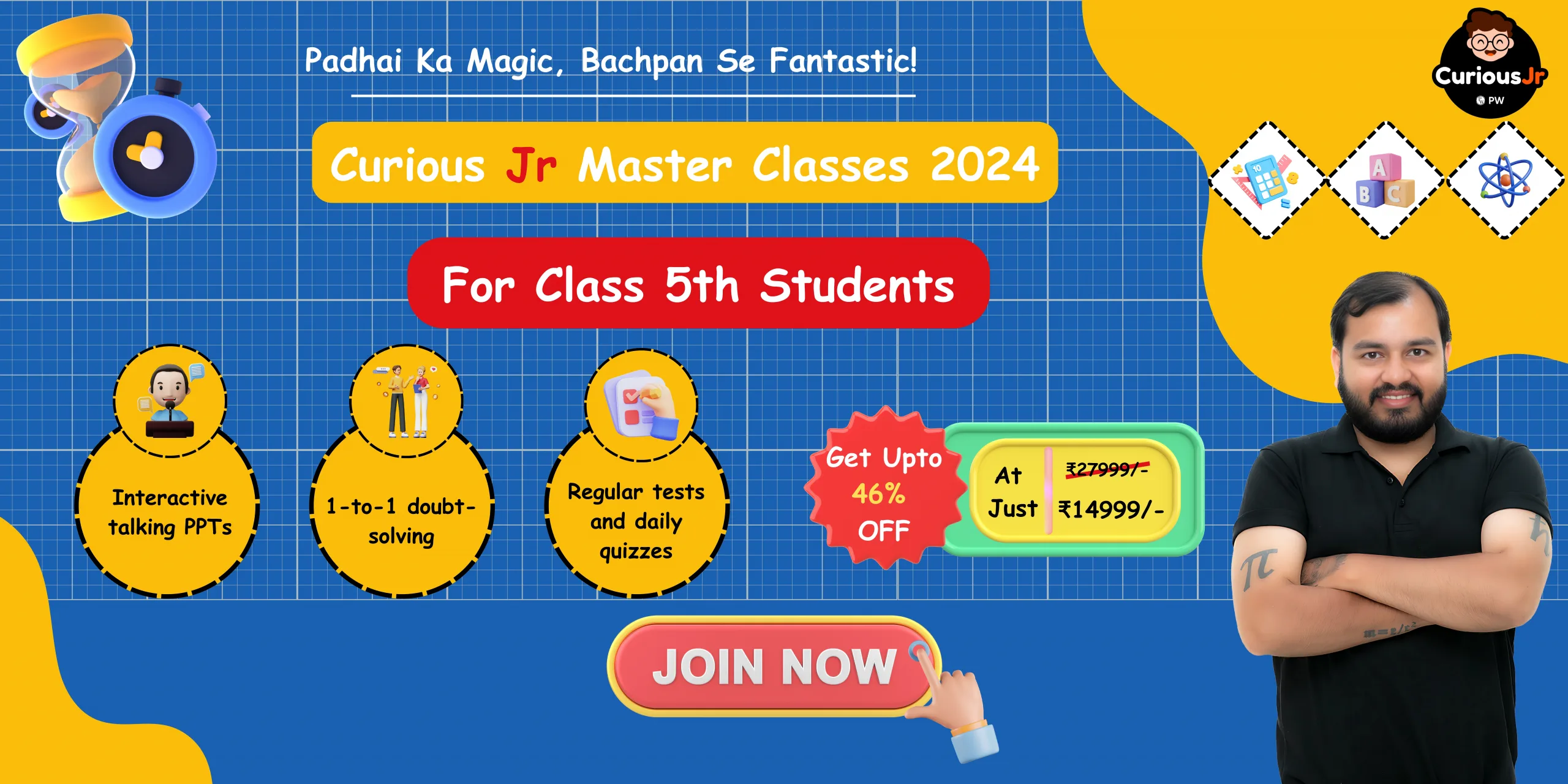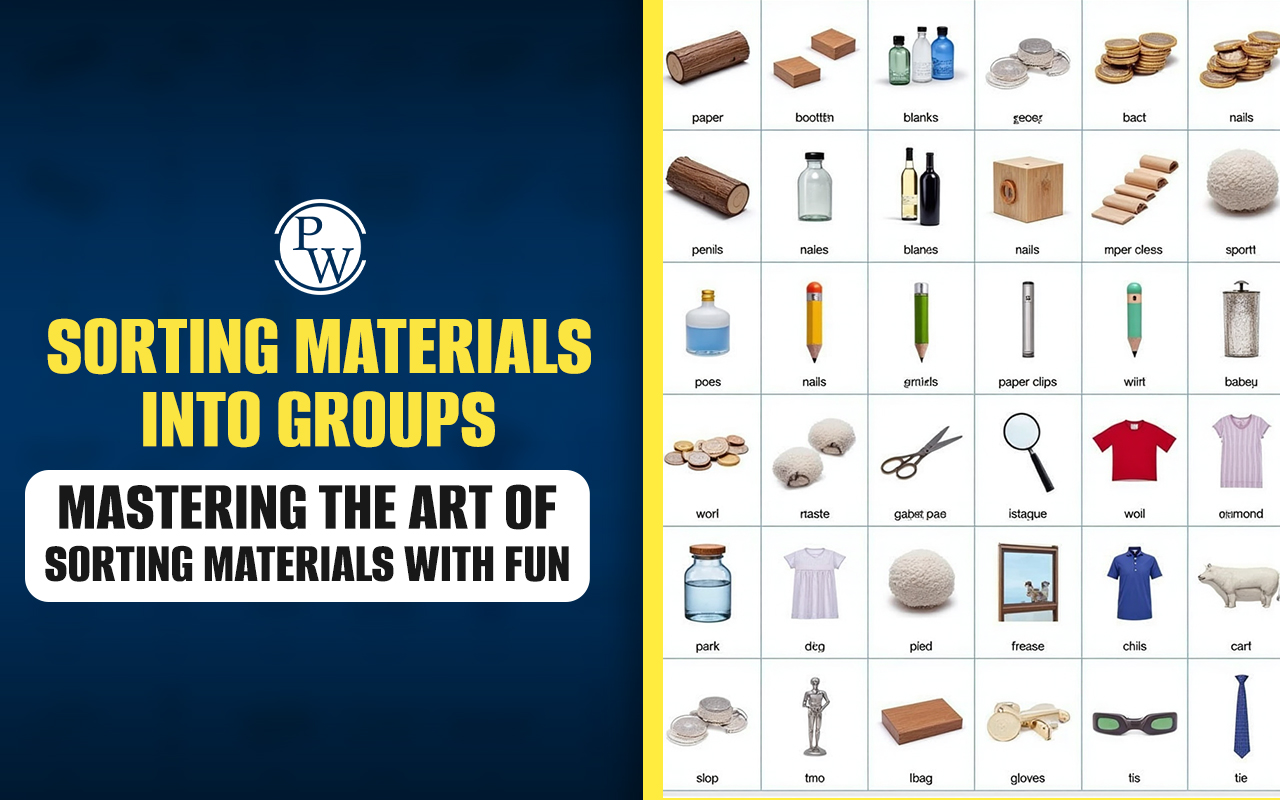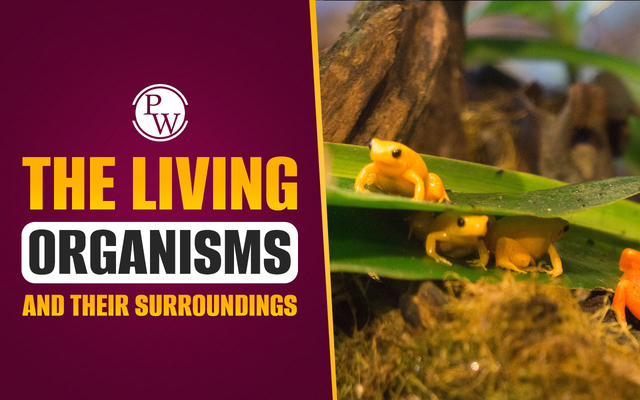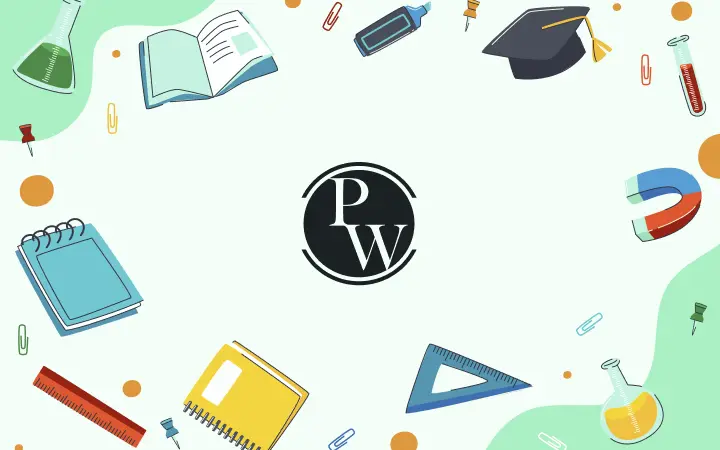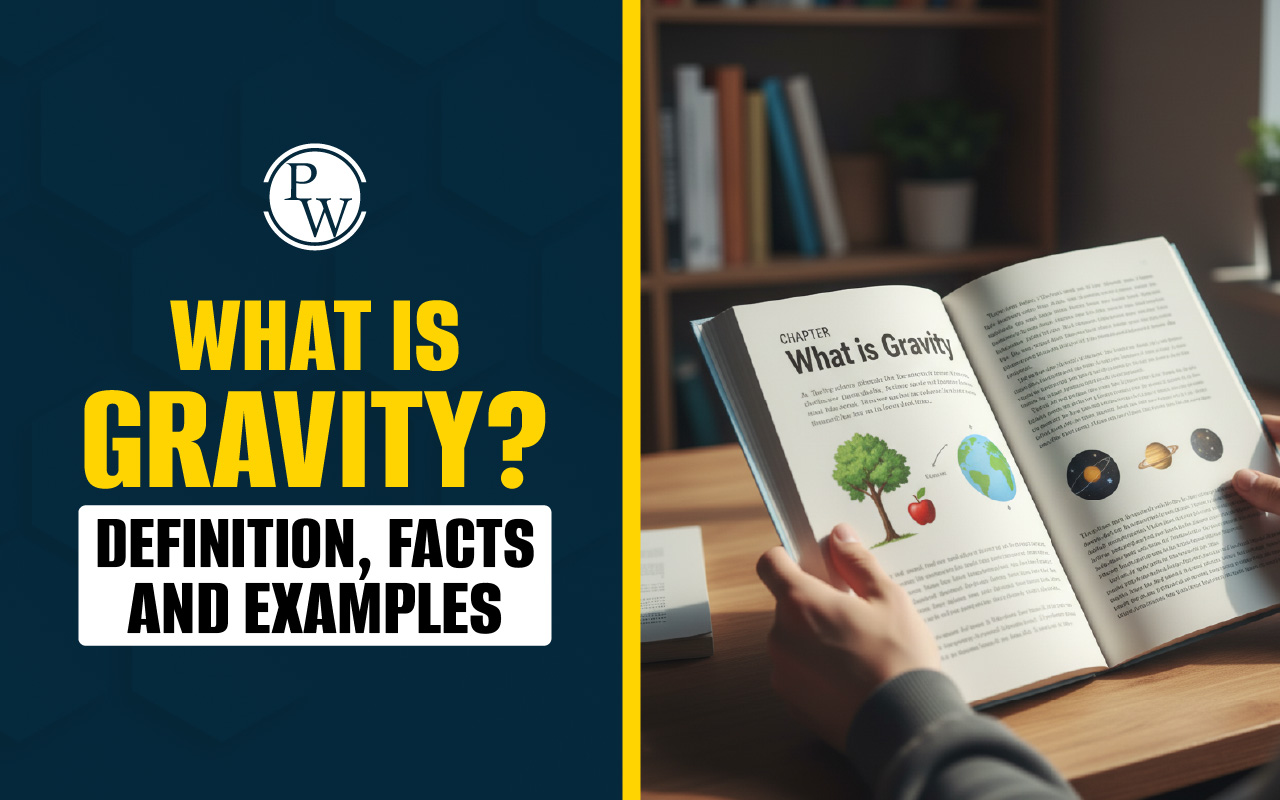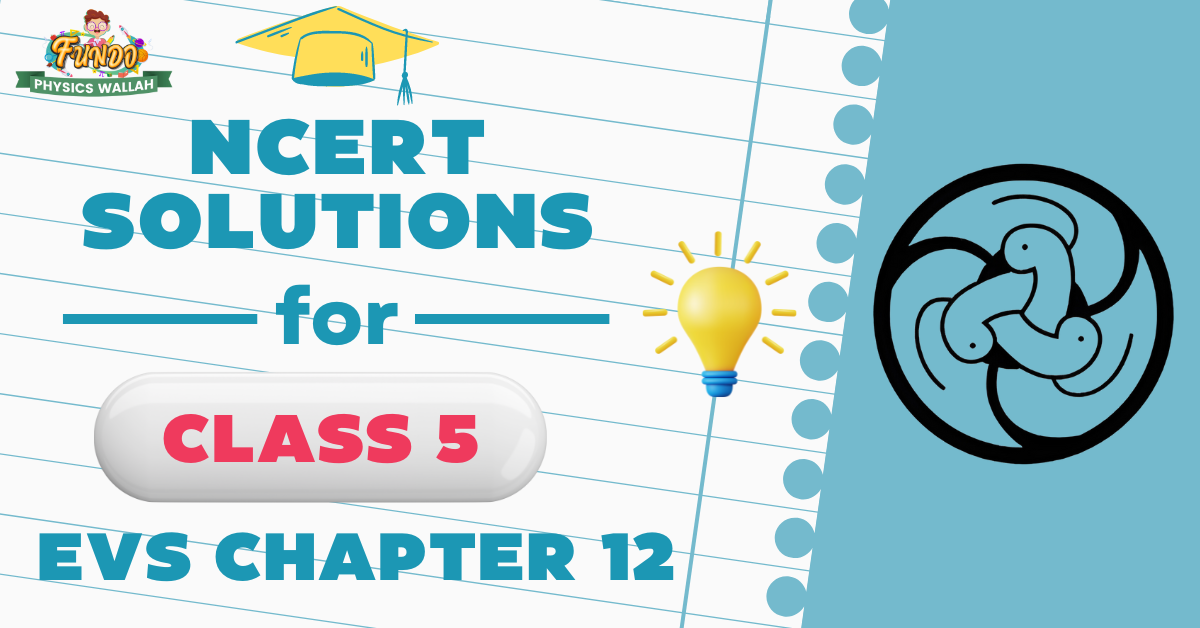
NCERT Solutions for Class 5 EVS Chapter 12
NCERT Solutions for Class 5 EVS Chapter 12 have been meticulously crafted to delve into the important discussion on the sustainability of our planet's resources. "What If It Finishes?" prompts young minds to consider the future of natural resources like fossil fuels and the global impact of their potential exhaustion. Physics Wallah's solutions for EVS Chapter 12, "What If It Finishes?", offer a comprehensive exploration into the significance of resource conservation and the steps we can take towards a sustainable future. The subject matter is made accessible and engaging, underlining the importance of each individual's role in preserving the environment. To foster a thorough understanding and encourage active participation in environmental conservation, it's essential for learners to engage deeply with the exercises in the NCERT Class 5 EVS textbook. Physics Wallah provides tailor-made solutions aligned with the CBSE syllabus, aimed at overcoming challenges and sparking curiosity about sustainable living.NCERT Solutions for Class 5 EVS Chapter 12 Overview
Physics Wallah’s NCERT Solutions for Chapter 12, "What If It Finishes?", aim to impart crucial knowledge about environmental preservation through clear explanations and illustrative examples. These solutions lay the groundwork for solid conceptual understanding, boosting confidence in discussing and advocating for sustainable practices. Dedicated to making learning an enriching experience, Physics Wallah ensures that comprehensive solutions for Class 5 EVS and other subjects are easily accessible. The "What If It Finishes?" solutions are specially designed to promote understanding, encouraging students to delve into textbook concepts and consolidate their knowledge. The platform's interactive features allow students to raise questions, further enriching the learning experience.Related Links -
NCERT Solutions for Class 5 EVS Chapter 12 PDF Download
Dive into the adventure of "What If It Finishes?" with NCERT Solutions for Class 5 EVS Chapter 12, curated by Physics Wallah. This journey uncovers the mysteries of our Earth's natural resources, especially fossil fuels, and the ripples they create when they dwindle. Our interactive PDF solutions, worksheets, and quizzes are designed to spark curiosity about sustainable living and the critical role of conserving resources. This chapter goes beyond academic learning; it's a call to become Earth's champions, making thoughtful choices to preserve its splendor for future generations. Through engaging stories and activities, explore how every action, no matter how small, can contribute to a healthier planet. Embark on this quest to understand the importance of every drop of oil and every breath of clean air. Let's light the fire of responsibility and creativity to find new paths towards a sustainable future. Are you ready to make a difference? Join us in exploring the endless possibilities of caring for our planet with "What If It Finishes?"NCERT Solutions for Class 5 EVS Chapter 12 "What If It Finishes?"
Here, you'll find Physics Wallah's NCERT Solutions for Chapter 12, offering clear, step-by-step guidance. These solutions are indispensable for completing homework efficiently and preparing for exams effectively. All questions and answers from the NCERT Book for Class 5 EVS Chapter 12 are included, ensuring that learners have the resources they need to succeed academically while gaining a deeper understanding of environmental issues.NCERT Solutions for Class 5 EVS Chapter 12 Look at the picture and write:
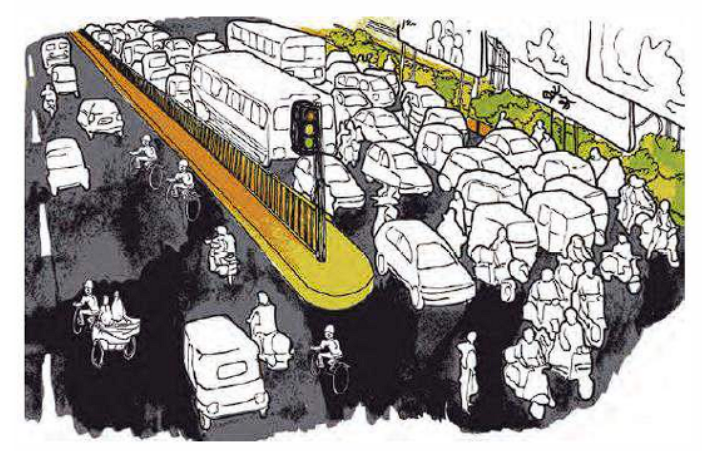
Q1: What are the different kinds of vehicles that you can see?
Answer: In the picture, there are several types of vehicles. I can spot bicycles, which are great because they don’t need fuel. There are also cars of different sizes, buses that can carry many people, motorcycles zipping around, and auto-rickshaws, which are pretty common in some cities.Q2: What do you think they need petrol and diesel as fuel?
Answer: Well, bicycles don't need any fuel because they run on human energy – that’s why they’re super for short trips and good exercise! The other vehicles like cars, buses, motorcycles, and auto-rickshaws usually need petrol or diesel to go. They have engines that burn fuel to make them move.Q3: Which of the vehicles do you think give off smoke? Put a red mark on those.
Answer: The vehicles that probably give off smoke are the cars, buses, motorcycles, and auto-rickshaws. They burn fuel to run, and that makes smoke come out, which isn't good for our air or our lungs.
Q4: Which are the vehicles run without petrol and diesel?
Answer: The bicycles are the champions here because they don’t need petrol or diesel. They just need a rider ready to pedal!Q5: What problems do we face from speeding vehicles?
Answer: Speeding vehicles can be really dangerous. They might cause accidents, which could hurt people and cause a lot of damage. Plus, they make roads unsafe for everyone, especially for people walking or on bicycles.NCERT Solutions for Class 5 EVS Chapter 12 Tell:
Q1: Do you ride a bicycle? If yes, where all do you go on it?
Answer: Yes, I love riding my bicycle! I pedal to school when it's sunny, zoom to the park to play, and sometimes I go to the nearby store to pick up snacks.Q2: How do you come to school?
Answer: I take the big yellow bus to school. It's fun because I get to sit with my friends and we sing songs on the way!Q3: How do your family members go to work from home?
Answer: My dad takes the car because he works far away, and my mom rides her scooter because it's quicker to get through the traffic.Q4: What problems can we have from smoke coming out of vehicles?
Answer: Vehicle smoke can make our air dirty. It can make us feel sick, like when we cough or can't breathe so well. It's not good for animals and plants either.Q5: What kind of problems can we face from the noise of vehicles (honking)?
Answer: Loud noises from vehicle horns can be really annoying. They can give us a headache, disturb our sleep, and make it hard to concentrate on homework. It's nice when it's quieter and we can hear the birds instead.NCERT Solutions for Class 5 EVS Chapter 12 Find out and discuss:
Q1: Which states of India have oil fields?
Answer: Oh, I learned this from a book! The states in India where we can find oil fields are places like Assam, where the big tea gardens are; Gujarat, which is also known for its lions; Maharashtra, where the Bollywood stars live; and Andhra Pradesh, which has a very long coastline.Q2: Besides oil, what else is found deep inside the earth?
Answer: There's a whole treasure of stuff inside the earth! There's coal, which we used to use a lot for cooking and in trains. Then there are shiny things like gold, which is used to make jewelry, and diamonds, that are super hard and can cut other things. We also have metals like iron to make lots of stuff like cars and bridges, copper which is used in wires, and minerals like potassium for farming, and magnesium and zinc, which are used in all sorts of things, even in medicines and sunscreens!NCERT Solutions for Class 5 EVS Chapter 12 Write:
Q1: What all can vehicles run on?
Answer: Besides petrol and diesel, vehicles can also zoom around using LPG, which is like cooking gas, and some cars get their go-go from the sun with solar energy! There are also electric cars and scooters that run on batteries, just like how toys work.Q2: What kinds of problems will we face if the number of vehicles keeps on increasing? For example, more traffic on the road. Talk to your elders and write about it.
Answer: My grandpa says if there are too many cars and bikes on the road, it can get super crowded, and we might be stuck in traffic for a long time, which is not fun. The air can get dirty from all the smoke, and the loud noises from honking can be bothersome. Also, if everyone's in a hurry, there could be more boo-boos, like crashes and bumps.Q3: Manju said, “Why doesn’t everyone use a bus?” What do you think, why don’t people travel by bus?
Answer: I think people might not take the bus because it can be super packed, and you might have to stand really close to strangers, which is not always comfortable. Sometimes, the buses don't come on time, or they don't stop near where people live or work.Q4: Suggest some ways to deal with the problems arising out of the growing number of vehicles.
Answer: We could have special days when we only use bikes or walk. Carpooling is a cool idea too — that's when people share a ride. And if more people could ride buses and trains, there would be fewer cars on the road. Maybe we can have bigger and better buses that come more often so people won't have to wait.Q5: What are the benefits if we switch off the engine of the vehicles at the red light on the road?
Answer: Turning off the car when we're waiting at the red light can save petrol, which is good for our wallets and the Earth. It also means less smoke to pollute the air, so we can breathe easier, and it's quieter too, which is nice for everyone around.NCERT Solutions for Class 5 EVS Chapter 12 Find out and write:
| How much oil? | Scooter | Car | Tractor |
| How much petrol/diesel can be filled at a time? | |||
| How far can it go on one litre of petrol/diesel? |
Answer:
| How much oil? | Scooter | Car | Tractor |
| How much petrol/diesel can be filled at a time? | 5 litres | 40 litres | 50 litres |
| How far can it go on one litre of petrol/diesel? | 40 km | 20 km | 4 to 6 km |

Q1: In 2014, as compared to 2007, the rate of petrol went up by ———rupees. The rate of diesel increased by — ———rupees.
Answer: In 2014, as compared to 2007, the rate of petrol went up by 24.34 rupees. The rate of diesel increased by 28.49 rupeesQ2: What was the difference in the rates of petrol and diesel from 2002 to 2007 and 2007 to 2014?
Answer: The difference in the rates of petrol from 2002 to 2007 is 13.61 rupees, and for diesel, it is 11.57 rupees. The difference in the rates of petrol from 2007 to 2014 is 24.34 rupees, and for diesel, it is 28.49 rupees. The difference in the rates of petrol from 2002 to 2007 is 13.61 rupees, and for diesel, it is 11.57 rupees. The difference in the rates of petrol from 2007 to 2014 is 24.34 rupees, and for diesel, it is 28.49 rupees.NCERT Solutions for Class 5 EVS Chapter 12 Find Out
Q1: What is the price of petrol and diesel in your area?
Answer: Right now, where I live, the price for petrol is around ₹ 74.46 for each litre, and for diesel, it's ₹ 66.84 per litre.Q2: Why are the prices of petrol and diesel going up?
Answer: Petrol and diesel prices keep going up because there's only so much oil under the Earth and it's hard to get. More and more people and cars need fuel, but because it's not easy to make more oil quickly, the prices go up when lots of people want to buy it.Q3: In one month, how much petrol and diesel is used in your home? What is it used for?
Answer: The amount of petrol and diesel we use each month changes. It depends on how many trips we make in our car or on the scooter. We use them to get to places like school, work, the market, and sometimes for little trips on the weekends.NCERT Solutions for Class 5 EVS Chapter 12 See the poster and write
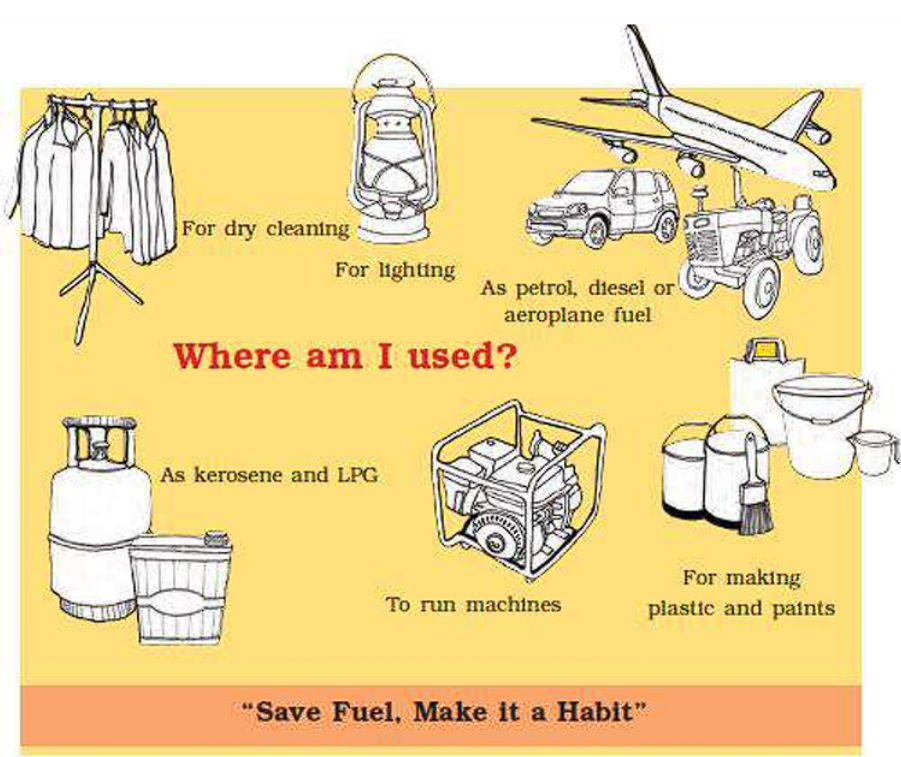
Q1: Where all is oil used?
Answer: Oil has so many uses! It helps to clean our clothes in dry cleaning, lights up our lamps at night, fuels our cars, buses, and even big airplanes. We also find oil in things like plastics and paints that we use every day. Plus, oil helps in running all sorts of machines and keeps our homes warm when used as kerosene and cooks our food as LPG.Q2: Where is diesel used? Find out.
Answer: Diesel is really strong and is used to power big machines like the ones on construction sites and farms. It's also the fuel that many trucks, buses, and some cars use to get around because it's good for driving long distances and carrying heavy loads.NCERT Solutions for Class 5 EVS Chapter 12 Think and Discuss:
Q1: What would happen if you don’t get petrol or diesel for a week in your village or town?
Answer: If there's no petrol or diesel for a week, it would be super tricky for everyone to get places like school or work. Cars and buses wouldn't run, and even the machines that help build things or farm would have to stop. It might be a bit like in the old days before there were cars, so lots of walking!Q2: Suggest some ways to save oil.
Answer: To save oil, we can do things like: Turn off car engines when we're waiting at traffic lights. It's like a mini-break for the car and saves fuel! Ride buses, trains, or even carpool with friends instead of everyone taking their own car. Use energy from the sun or wind, which is like nature's power, instead of oil for electricity. For short trips, we can use our legs and walk or pedal bicycles, which is also super healthy!NCERT Solutions for Class 5 EVS Chapter 12 Discuss:
Q1: Have you ever collected dry wood or made cow dung cakes? How are they made?
Answer: I've collected sticks and twigs for a campfire but haven't made cow dung cakes myself. I know they're made by mixing dry hay with cow dung, shaping them into flat rounds, and leaving them out in the sun to dry.Q2: Do you know anyone who collects dry wood or leaves to be used for lighting a chulha?
Answer: Yes, in the countryside, some folks gather dry wood and fallen leaves to light their chulhas for cooking. It's a lot of work but it's how they make their meals.Q3: Who cooks food in your family? What about other families in your area?
Answer: My mom is the chef in our house; she makes the yummiest dishes. In other homes I know, moms, dads, and sometimes cooks prepare the food.Q4: If they cook food using wood or upla (cow dung cakes), what difficulties do they face due to smoke?
Answer: Cooking with wood or upla can make a lot of smoke, which isn't good to breathe in. It can make people cough, give them teary eyes, and sometimes even cause chest pains or headaches.Q5: Can Durga use anything else instead of wood? Why not?
Answer: Durga could use other things like LPG or biogas if it's available. They're cleaner and don't make smoke, but they can be expensive or hard to get in some places.NCERT Solutions for Class 5 EVS Chapter 12 Change in fuel use over twenty years

Q1: In the year 1976, out of 100, how many houses used upla and wood?
Answer: In the year 1976, out of 100 houses, 84 used upla and wood.Q2: Which was the fuel used the least in 1976?
Answer: The least used fuel in 1976 was electricity.Q3: In 1976, LPG and kerosene were used in ______ houses, and in 1996, this increased to ______. This means that in twenty years their use increased by ________%.
Answer: In 1976, LPG and kerosene were used in 10 houses, and by 1996, this number increased to 18 houses. This means that in twenty years, their use increased by 80%.Q4: Out of 100, how many houses were using electricity in 1996?
Answer: In 1996, out of 100 houses, 5 were using electricity.Q5: Which fuel was used the least in 1996? What percentage of houses used it in the year 1976?
Answer: Coal was the least used fuel in 1996. In 1976, 5% of houses used coal.NCERT Solutions for Class 5 EVS Chapter 12 Find out from your elders
Q1: When they were young, what was then used for cooking food at home?
Answer: My grandparents told me that when they were young, they mostly used coal or gathered wood for cooking. Some people also made cow dung cakes to use as fuel. It was all about using what was around them.Q2: In the past 10 years, the use of which cooking fuel has increased in your area? Use of which fuel has decreased?
Answer: In the last decade, more and more people in my neighborhood started using LPG (that's cooking gas) and electricity to cook their food because it's cleaner and easier. Not as many people use wood and cow dung now because it's messier and smokier.Q3: Guess the use of which fuel would increase and which would decrease in the next 10 years.
Answer: I think in the future, even more people will use electricity, maybe from solar panels, because it doesn't make smoke and we can get lots of energy from the sun. LPG will probably still be popular, but fewer people might use wood and cow dung because there are easier ways to cook that don't make so much smoke and are better for the air.Importance of NCERT Solutions for Class 5 EVS Chapter 12 "What If It Finishes?"
In the pivotal Chapter 12, "What If It Finishes?" from the Class 5 EVS curriculum, students are led into a critical exploration of the world's finite resources, particularly focusing on fossil fuels and their sustainability. This chapter isn't just about understanding the depletion of natural resources; it delves deeper into the implications of such a reality on our planet and future generations. It encapsulates crucial themes of conservation, sustainable living, and the intricate balance of nature. The NCERT solutions for this chapter, crafted with care by educational specialists, act as an extensive guide for students, breaking down complex ideas into understandable segments. These solutions are designed to equip students with the knowledge and perspectives needed to thoughtfully address environmental challenges. Leveraging these solutions expands the learning horizon for students, enriching their comprehension of conservation, the significance of sustainable choices, and the critical role each individual plays in protecting our planet. It gears them up for real-world challenges, sharpening their decision-making abilities and cultivating a strong sense of environmental stewardship.Benefits of NCERT Solutions for Class 5 EVS Chapter 12
NCERT Solutions for Class 5 EVS Chapter 12, "What If It Finishes?", are crucial for students aiming to grasp the concept of resource conservation and the broader implications of environmental sustainability. The benefits of these solutions include:- Environmental Awareness: Through detailed discussions, students learn about the importance of conserving natural resources and the consequences of their depletion.
- Critical Thinking and Problem Solving: The solutions foster critical thinking by challenging students to consider sustainable practices and the impact of human activities on the planet.
- Preparation for Future Challenges: These solutions prepare students to face future environmental challenges with knowledge, thoughtfulness, and responsibility.
- Empowerment and Responsibility: By understanding the concepts of conservation and sustainability, students feel empowered to make a difference, recognizing their role in preserving the environment.
- Interactive and Engaging Learning: The solutions engage students with interactive questions and activities, making learning about environmental issues interesting and impactful.
- Alignment with Educational Goals: Tailored to meet educational standards, these solutions ensure that students not only excel academically but also grow as informed and responsible global citizens.
NCERT Solutions For Class 5 EVS Chapter 12 FAQs
What is the central theme of "What If It Finishes?"?
How does Chapter 12 "What If It Finishes?" benefit students?
What key lessons can students take from "What If It Finishes?"?
Why is "What If It Finishes?" included in the EVS syllabus?
How does Physics Wallah enhance learning for Chapter 12?

